How did a team that no one tipped to win the Premier League win the Premier League? Here, James Nalton looks at the tactics behind Arne Slot‘s crowning season.
Under Arne Slot, Liverpool were the outstanding outfit in 2024/25 and eventually won the title with four games to spare. They went to the top of the league on November 2 and there they remained for the duration.
Slot turned the players he inherited from the Jurgen Klopp era, who had topped the table for around a third of the 2023/24 season but eventually finished third, into a group that could do that little bit extra required to get over the line.
It could be said it was as much about what they didn’t do, or what they did less of, as what they did do. The tweaks Slot and his coaches made to Liverpool’s shape and style helped them find an extra edge in the league.
There has not been as much of a buzz around Slot’s tactics as there has been around the other managers who have won the Premier League in recent years, Klopp and Pep Guardiola, who defined the league’s style from the top.
Other managers in the league this season, such as Andoni Iraola, Thomas Frank, and Nuno Espirito Santo, have at various points attracted more interest tactically.
Slot and his team have now forced the issue. The tactics of champions need to be analysed.
From Klopp and Guardiola to Slot
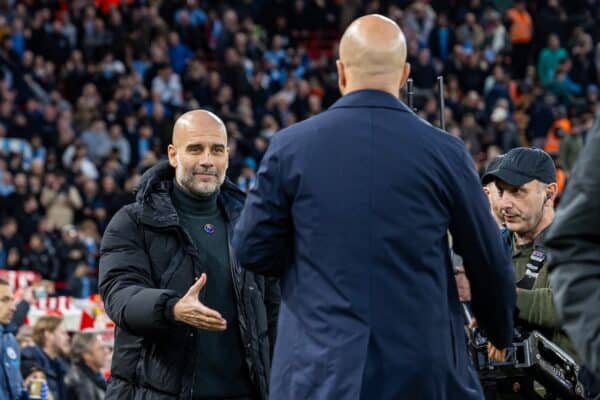
Klopp was all about the counter-pressing and the “heavy metal football,” while Guardiola’s Man City teams have been standard bearers of the positional game with some typical Guardiola tinkering and innovating thrown in.
Both Klopp’s Liverpool and Guardiola’s City shared traits, but it was generally easy to talk about them as tactical trendsetters because their styles stood out.
That’s not necessarily the case with Slot.
Slot’s team enjoy plenty of possession but are not the side in the league with the highest average possession. Man City top that particular chart while Chelsea have often been ahead of Liverpool for average possession this season.
Liverpool average 57.8 percent possession and 528 passes per game – their lowest on both counts since the 2015/16 season.
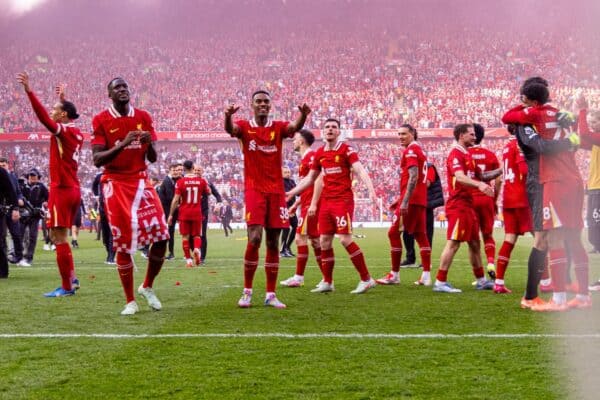

Slot’s team press, but aren’t the most active pressers in the league. They’re behind Tottenham, Bournemouth, and Arsenal for opposition passes allowed per defensive action (PPDA); and are fifth for opposition passing sequences pressed (low PPDA means more pressing – see Opta for definitions).
Slot’s team do everything well but don’t do anything to the point where they are defined by it.
Some of the Klopp characteristics are still on show, not least in the goal that put Liverpool ahead against Spurs. Ryan Gravenberch won the ball high up the pitch, and his midfield partner Alexis Mac Allister let off a shot from distance, which flew past goalkeeper Guglielmo Vicario.
That both Gravenberch and Mac Allister were so high up the field in this moment shows how Slot’s Liverpool are still capable of effective high pressing in certain moments.
The Reds are fourth in the league when it comes to how far away from their own goal open play attacking moves begin, which hints at high pressing and a high defensive line.
Slot’s Liverpool win possession in the final third 4.5 times per game on average, putting them eighth in the league for this stat, and this is also around average for Klopp’s Liverpool, but much lower than the 2019/20 title-winning team (5.53) and Klopp’s last season (6.13).
It illustrates some pressing but, again, they are not defined by it.
Midfield re-focus
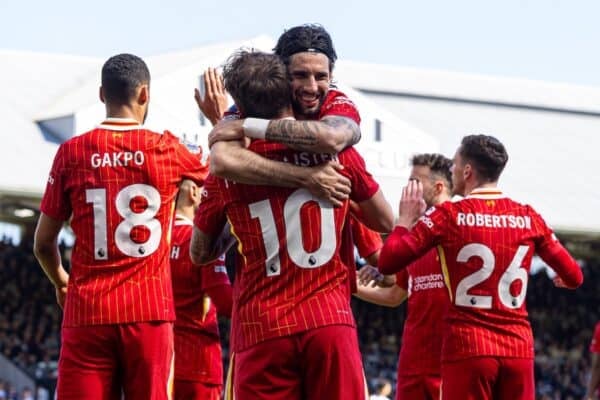

One area of weakness in the Liverpool team at the start of the season was presumed to be in the deepest midfield role. The club seemed to think so, too. They tried to sign Martin Zubimendi, but the Spanish midfielder chose to stay at Real Sociedad.
To solve this problem, Slot converted Gravenberch into a deep-lying midfielder, using his ability to turn in midfield to help move Liverpool forward, and his physical presence to contribute defensively.
Per Transfermarkt, Gravenberch played 1,121 league minutes in the 2023/24 season, but that has risen to 3,011 minutes in 2024/25, and he has started all but one league game with two still to go.
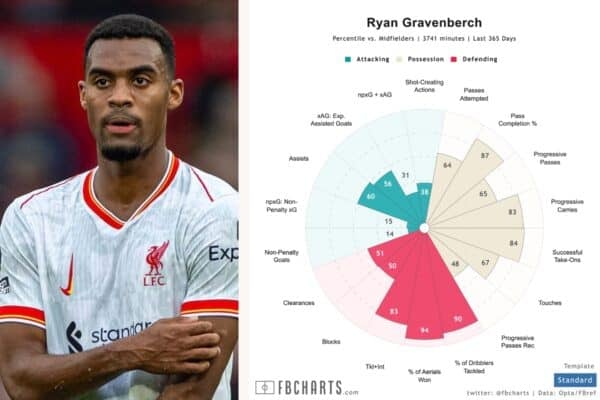

Positionally, he works in a deep midfield position but does a lot of covering down the right where Mohamed Salah and Trent Alexander-Arnold attack.
He has been the insurance allowing these players to get forward with more freedom, but also chooses his own moments to get forward.
The graphics below, from SofaScore, show his 2023/24 (top) and 2024/25 (bottom) season heatmaps. His increased involvement and new responsibility in deep areas, more focused on the right in defence, is clear to see.
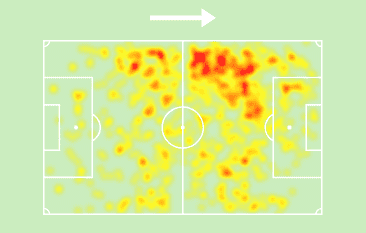



Stationed alongside Gravenberch but sometimes pushing up alongside Dominik Szoboszlai, Mac Allister has been the best midfielder in the Premier League this season.
The stats might not show as much, but like Slot’s team as a whole, he has been the best all-rounder without necessarily standing out in one particular area.
Ahead of Mac Allister, Szoboszlai’s tactical role has also been key to Slot’s title-winning team.
The Hungarian’s advanced position has led to the idea Liverpool are playing a 4-2-3-1, but it’s more like a staggered midfield three, with Szoboszlai playing on the right as a free-eight, Kevin De Bruyne-type, rather than as a central No. 10.
The technically gifted Hungarian has been stationed as the most advanced of the three midfielders, morphing the team from a 4-3-3 to a 4-2-4 at times in defence and attack as he joins the front line to the right of the striker, with Mac Allister occasionally joining that line to the left of centre.
Liverpool’s average positions and movement this season based on a few player heatmaps and from watching the games. A look at the roles as much as the individual players.
— James Nalton (@jdnalton.bsky.social) 2025-01-28T17:00:56.901Z
His work rate off the ball has helped Salah have the season he has had, and while at times criticised for his end product, Szoboszlai has been key to the shape and the execution of the tactical plan.
After Liverpool’s 2-0 win at City in February, Szoboszlai dropped to the floor through exhaustion, summing up the work he puts in and how much he’s given to this title win, even if in a slightly different manner of contribution than many expected after he joined from RB Leipzig.
What the players say
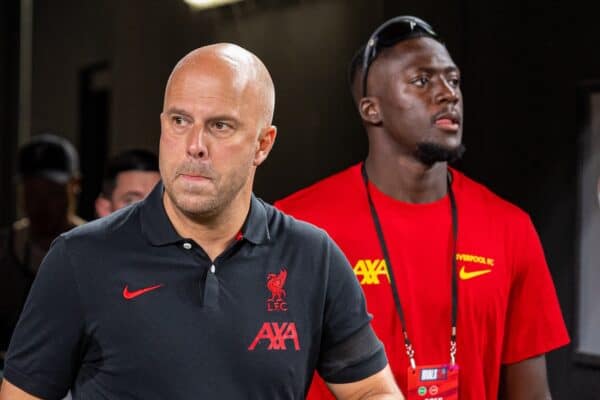

Throughout the season, players have spoken about Slot’s changes, even if they haven’t gone into too much detail about what has been changed.
“He tweaks our role every single game really, depending on who we’re playing, how they set up, and how we want to set up,” Andy Robertson said in December, also referencing other coaches who include Slot’s assistants Sipke Hulshoff and John Heitinga.
“We have different positions and different roles within every game. Tactically, he’s unbelievable, him and his staff.”
This season, the role of full-backs like Robertson, has seen them operate more centrally at times when defending as Slot has tried to work out the best way to stop teams counterattacking against a high line – a problem many top managers grapple with.
Robertson and Alexander-Arnold regularly approach the forward line inside rather than always overlapping.
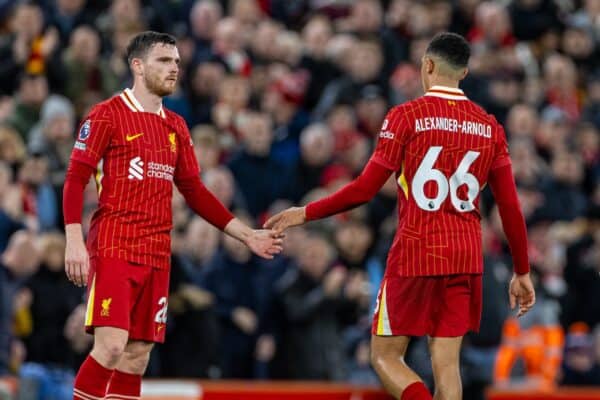

Compared to last season, when Alexander-Arnold was moving inside deeper in the buildup phase, he is now doing so higher up the pitch.
Conor Bradley does something similar, driving more with the ball but also doing so going inside rather than out, as shown by his assist for Diaz against Fulham and for Szoboszlai in the League Cup against Spurs.
Kostas Tsimikas offers a high level of creativity from the left when he plays, through crossing and progressive passing.
Progressive passes per 90 mins, Premier League 2024/25 (+500 mins played, FBref):?? Martin Ødegaard – 10.40?? Kostas Tsimikas – 9.05?? Bruno Fernandes – 8.92??????? Trent Alexander-Arnold – 8.46
— James Nalton (@jdnalton.bsky.social) 2025-04-21T09:28:09.955Z
These more central positions for the wide defensive players help support Gravenberch and Mac Allister and this kind of rest defence in front of the centre-backs helps stop counter-attacks.
A lot of the aspects mentioned above, plus the midfield rotations which retain a similar shape regardless of who is doing what, were on show for the Mac Allister goal against Spurs.
As soon as Liverpool lose the ball, Szoboszlai presses on the right, and with Gravenberch already high up on the counter-press, Mac Allister drops into the deeper position and Robertson remains central, immediately making the defensive shape more compact.
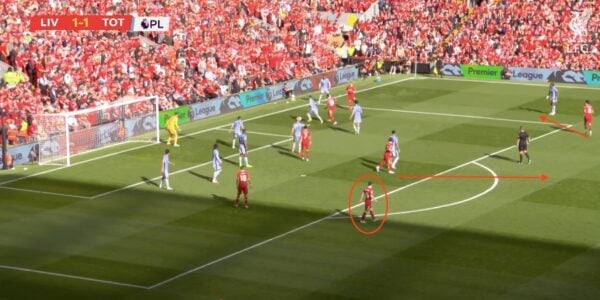

Just before the goal, Liverpool are in a 2-3-5 formation high up the pitch, with the full-backs positioned in midfield.
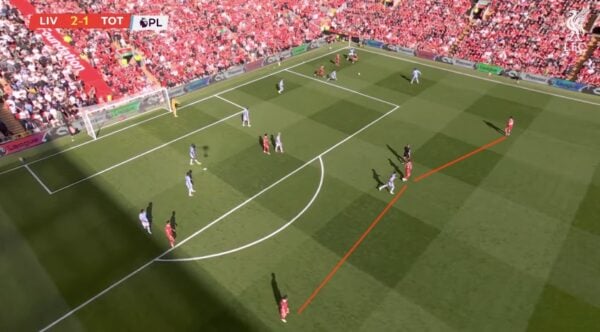

When Gakpo drops back to potentially receive a pass from Mac Allister, Robertson thinks about overlapping, but only once he knows Gakpo is filling that deeper space, in case the ball is lost.
In the end, Gakpo and Robertson weren’t needed as Gravenberch won the ball back and Mac Allister fired Liverpool ahead in the game.
Judging by what the players say, and looking at how the team performs and sets up on the field, Slot’s changes appear to have been around positioning and decision-making.
He has tweaked some of the things Pepijn Lijnders did with the team in possession while retaining some of Klopp’s out-of-possession ideas but deploying them more sparingly within games.
Arne Slot on following Klopp and winning the title (Sky): “It’s not only been my job, it’s been the job of the players and staff members, and the work Jurgen and Pepijn left behind here. The culture, work rate, and quality of the team was outstanding.”
— James Nalton (@jdnalton.bsky.social) 2025-04-27T18:15:02.443Z
It’s more progressive metal rather than heavy metal, still able to ramp up the tempo and the volume in certain moments, but happy to be more patient in others.
“Just before we started the season, he showed us why we didn’t win the league the year before,” Ibrahima Konate said of Slot.
“He said if we change that and improve on that, we have a big chance to win the league, and that’s what we’ve done since the start of the season.”
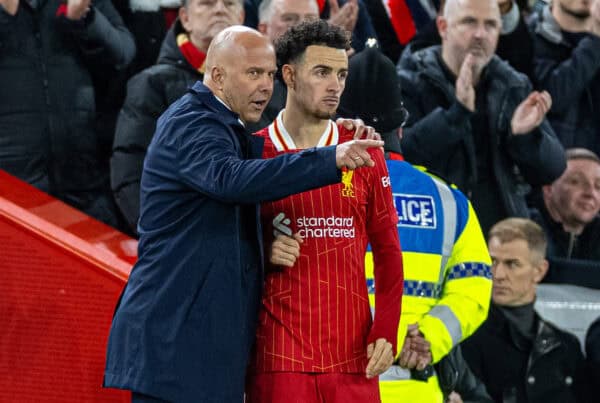

Perhaps the best summary from a player of Slot’s tactics came shortly after he arrived.
Curtis Jones got in a bit of bother for his comments, which were twisted at the time as somehow being disrespectful to Klopp, but they were simply stating what had changed.
“The principles are the same, but I feel that now the centre-mids are going to be more the heart of the team,” said Jones.
“Mo is still going to get his goals, but in terms of our build-up, it’s how comfortable and calm we have to be and play more as a team.
“We’re not in a rush to attack, we want to have the ball and break teams down, and that gives us a chance. If we give the ball away, we can go and press.
“I feel in the past it was a rush to get the ball back, and it was a little bit too direct, up and down, up and down.
“Now it’s going to be where he wants us to have all the ball and just completely kill teams.”
It once again emphasises a focus on the team’s play in the centre of the field, which made the Gravenberch, Mac Allister, and Szoboszlai dynamic a key component of this team.
Jones himself has been used in several positions but looked most impressive in the Mac Allister or Szoboszlai roles, where he could contribute to build-up play further forward.
The standouts
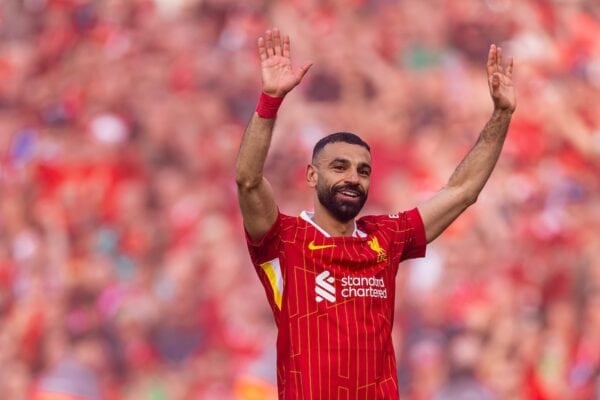

All of this has allowed Salah to have arguably the best season of his career, despite plenty of competition for that title among his previous seasons.
Even with two games to play, Salah has already had more touches in the opposition box than in any of his previous Premier League seasons, and he is regularly the target of Liverpool’s direct attacks, receiving long passes from Virgil van Dijk or Alexander-Arnold.
And if there’s one overall area of output that does stand out under Slot, it’s counter-attacking.
Liverpool have scored the most goals from counter-attacks (14) and are some distance ahead of other teams for Opta-defined ‘fast breaks’ (effectively counter-attacks) with 74 in total, ahead of next-best Chelsea‘s 58, with 64 resulting in shots ahead of Chelsea‘s 51.
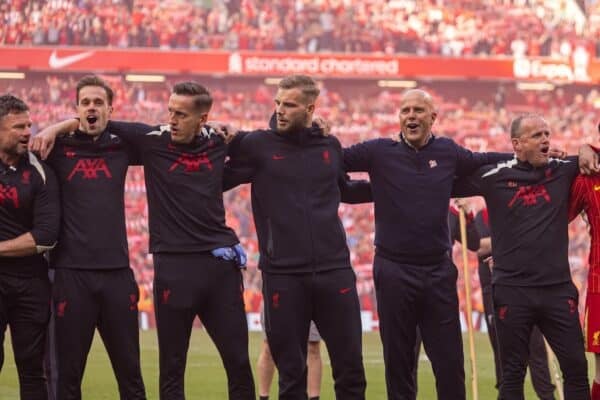

Salah has 25 shots from counter-attacks this season (seven of them goals), far ahead of the next highest on this list – Matheus Cunha and Son Heung-min with 13 each.
Though the output is defined by Salah’s goals and creativity, and Alexander-Arnold’s playmaking, underneath that is an obvious change to the process, focusing on the midfield and a shape at the back which attempts to stop counter-attacks earlier or allow Liverpool to reset into a defensive shape earlier, and take control the game quicker once in possession.
This is likely why it feels like Liverpool have had more control under Slot, even though the possession numbers are lower than they were under Klopp.
It’s this control and reorganisation while maintaining the mentality, counter-pressing and counter-attacking from the Klopp era, that has turned Liverpool from challengers to champions once again.










